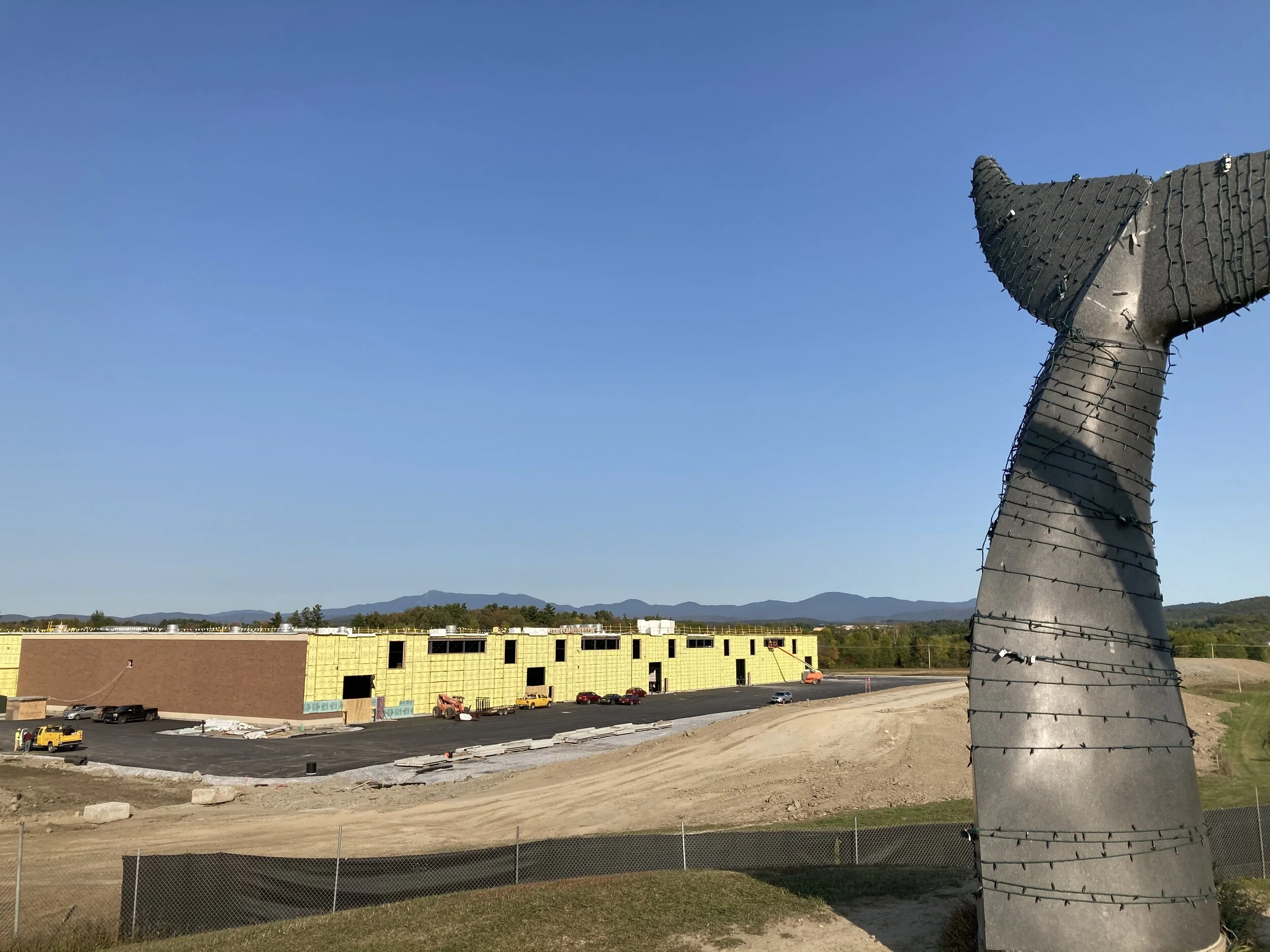The man with a plan for ham radio towers
Zachary Manganello is a longtime ham radio enthusiast looking to up his gear game. Courtesy photo.
Zachary Manganello is a lawyer by day, but in his off hours he’s a passionate amateur radio operator. To support his hobby, he hopes to erect two radio towers in his backyard off Dorset Street — towers he describes as modest in height compared to others you might see around the world.
Some of his neighbors disagree. The proposal has stirred controversy in the neighborhood, provoking objections that the towers would obstruct some residents’ view of Camel’s Hump. After hearing those concerns, Manganello downsized his proposed towers, from two 84-foot structures to one freestanding 50-foot tower and one 36-foot antenna attached to his house.
The Shelburne Telecommunications Review Board is scheduled to consider the new proposal at a hearing on Nov. 12.
During an interview in his backyard recently, the 40-year-old discussed his hobby and his tower application.
The new towers are a way to extend a pastime he’s enjoyed since he was a boy, he said. He was introduced to ham radios by his stepdad, an enthusiast who has been using these radios for as long as Manganello can remember.
“He would be sounding out street signs in Morse code,” he said. “Immediately it clicked for me.”
By grade 7, when most kids were getting braces, Manganello had passed the test to get his amateur operator license from the Federal Communications Commission.
Ham radio or amateur radio operators communicate over long distances by using their equipment to bounce radio signals off the ionosphere, enabling them to talk with other operators around the world. Radio operation requires technical proficiency, attention to safety, flexibility, good communication and critical thinking skills, he noted.
Manganello said that sometimes he turns on his radio not knowing to whom he’ll be talking. “Once upon a time, the king of the country of Jordan, King Hussein, was into amateur radio. I never got to talk to him, but I heard if you did, you’d get a postcard from him,” he said.
“I’ve definitely talked to, I would say, tens of thousands of people on the radio,” he said. He practices his Spanish over the airwaves with ham radio operators in Spanish-speaking countries; at other times, he uses Morse code to communicate with operators who don’t speak English. His contacts have included scientists at the South Pole and astronauts on the International Space Station.
“I happened to hear the astronaut talking to these [other ham operators] and said okay, I’m going to … jump in,” he recalled.
The brief conversation required some technical know-how: Since the space station was moving, Manganello had to change radio frequencies as the station moved past him.
Not all his conversations are at such long distances. One of his favorite contacts is his stepdad, Jim Whipple, who lives in Maine.
Manganello said he normally keeps sensitive topics, like politics, out of his ham radio conversations. “It is a discussion over the open airwaves. Anybody could be listening, including the governments of some countries,” he said.
A part of being an amateur radio operator is serving the public during emergencies or important events. Manganello has worked during the Vermont City Marathon and with the Red Cross during a 1998 ice storm in Maine, where he was living at the time.
“When the electricity is out and the phones are down that was the way we talked,” Manganello said.
Now, he said, he believes he has reached his limit on the current equipment. He and his wife, Willow Stein, recently completed their move from Charlotte to Shelburne and much of his equipment is still in boxes. He has just one radio set in operation, using a temporary antenna that’s less than 35 feet high. That greatly limits his ability to communicate with other ham radio operators, especially those a great distance away.
“You build what you’re able to build and talk with who you’re able to talk to and then you want to build the next thing and advance your skill,” Manganello explained. That led him to propose two 84-foot towers last year to give him more global reach.
“I want to continue to be a public servant and to offer my skills and expertise,” Manganello said.
Among the neighbors who objected to the first proposal is Luke Hoenigsberg, who lives south of Manganello.
The two 84-foot towers would have been directly in his line of sight toward the Green Mountains, he said.
Hoenigsberg was relieved when Manganello withdrew his original plan and proposed two shorter structures, he said. The new 50-foot tower will not block his view, but it will still be prominent from Dorset Street.
“It’s not going to be small, by any means. You’re gonna be able to see this thing from quite far away,” Hoenigsberg said.
At the town’s request, in anticipation of the Nov. 12 hearing, Manganello performed a second test of the visual impact of his new proposal, floating two large red balloons at 50 and 36 feet above his property for several hours on Oct. 4. The town has also asked for additional information about radio frequency exposure — the idea that radio waves have a negative effect on the human body —- which some neighbors have worried about. Manganello must also provide a revised photo simulation of the towers.








